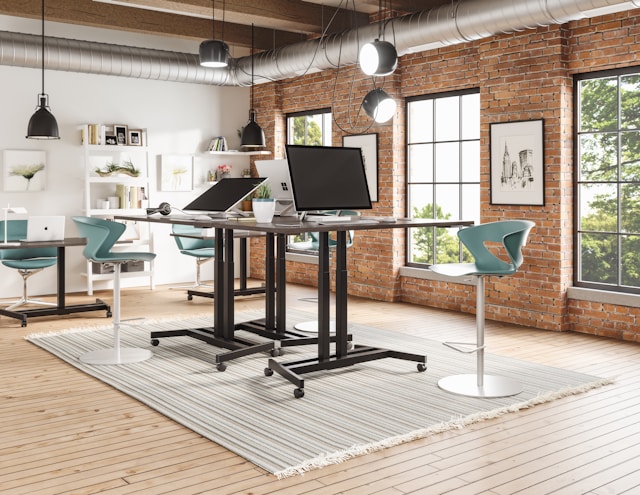In the modern workplace, work productivity isn’t just about the tools and technology at hand—it’s also heavily influenced by the work environment. The psychology of workspace design plays a major role in shaping how teams collaborate, communicate, and, ultimately, perform.
Read on to explore the fundamental principles and strategies behind creating workspaces that enhance team productivity.
Understanding the Impact of Workspace Design
Workspace design isn’t just about aesthetics; it’s about creating environments that support employees’ cognitive and emotional needs. Various workspace elements, such as layout, lighting, color, and even the presence of nature, can significantly impact mood, focus, and productivity.
The Power of Layout and Spatial Arrangement
A workspace layout can either facilitate or hinder collaboration and communication among team members. Open-plan layouts encourage interaction and idea sharing, while designated quiet areas or individual workstations provide opportunities for focused work without distractions. Flexibility in design, with movable furniture or modular partitions, allows teams to adapt the space to their evolving needs throughout the day.
Harnessing Natural Light and Biophilic Elements
Natural light is not only essential for maintaining circadian rhythms and overall well-being but also has a profound effect on productivity. Access to natural light in the workplace can improve mood, reduce stress, and increase productivity. Integrating biophilic elements, such as indoor plants or nature-inspired design elements, further enhances the connection to the natural world and promotes a sense of calm and creativity.
Impact of Colors on Mood and Performance
Colors psychologically impact individuals and can influence mood, focus, and even energy levels. Warm colors like red and orange stimulate creativity and energy, while cooler tones like blue and green promote calmness and concentration. Carefully selecting color schemes for different areas of the workspace can help create the desired atmosphere and support specific types of work tasks.
Personalization and Ownership
Allowing employees to personalize their workspaces can foster a sense of ownership and belonging, boosting morale and productivity. Decorating their desks or workstations with personal items, photos, or plants adds personality to the space. It creates a sense of comfort and familiarity, enhancing job satisfaction and motivation.
Minimizing Distractions and Noise
Noise and distractions can significantly impact concentration and productivity in the workplace. Implementing sound-absorbing materials, such as acoustic panels or carpets, can help reduce noise levels and create a more conducive environment for focused work. Additionally, providing designated quiet zones or implementing sound masking technology can offer employees alternative spaces to escape distractions when needed.
Adopting Technology for Collaboration and Connectivity
Technology is vital in improving communication and collaboration among team members, regardless of their physical location. Video conferencing software, collaborative project management platforms, and digital whiteboards can help bridge the gap between remote and in-house team members, facilitating seamless information sharing.
Ready to transform your workspace? Consider integrating Curtis Partition solutions into your design strategy. With customizable partitions designed to enhance privacy, acoustics, and aesthetics, our team offers innovative solutions tailored to your unique workspace needs. Contact us today to elevate your workspace design and boost team productivity.

